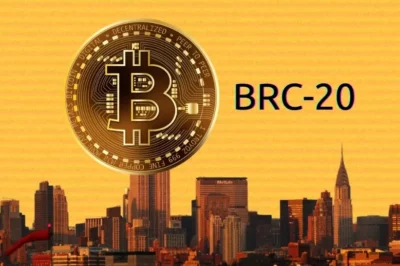
Introduction:
In the ever-evolving landscape of blockchain and cryptocurrencies, new technologies and standards continually emerge to enhance security, interoperability, and functionality. One such standard that has gained prominence is BRC 20. In this article, we will delve into the intricacies of BRC 20, exploring its definition, features, and its significance in the blockchain ecosystem.
What is BRC 20?
BRC 20 is a token standard on the Binance Smart Chain (BSC), a blockchain network that has gained significant traction for its speed, low transaction costs, and compatibility with the Ethereum Virtual Machine (EVM). The term “BRC” stands for Binance Smart Chain, and the number “20” denotes the unique identifier assigned to this token standard.
Developed as a counterpart to Ethereum’s ERC-20 token standard, BRC 20 tokens are fungible digital assets that adhere to a set of rules and specifications, ensuring seamless integration with the Binance Smart Chain. These tokens are crucial for the functioning of decentralized applications (DApps) and smart contracts on the BSC.
Key Features of BRC 20:
Fungibility:
Similar to ERC-20 tokens on the Ethereum network, BRC 20 tokens are fungible, meaning each token is interchangeable with another of the same value. This feature is essential for their use as a medium of exchange within decentralized applications.
Interoperability:
BRC 20 tokens are designed to be interoperable with the Ethereum network, thanks to the compatibility with the Ethereum Virtual Machine. This allows developers to port their Ethereum-based projects seamlessly to the Binance Smart Chain.
Smart Contract Functionality:
BRC 20 tokens are supported by smart contracts on the Binance Smart Chain, enabling developers to create complex decentralized applications and automate various processes within the blockchain.
Low Transaction Costs:
The Binance Smart Chain is renowned for its low transaction costs compared to the Ethereum network. BRC 20 tokens benefit from this advantage, making them an attractive option for developers and users seeking cost-effective transactions.
Fast Transaction Confirmation:
BSC’s consensus mechanism allows for faster block times, resulting in quicker transaction confirmations. This speed is advantageous for applications requiring near-instantaneous transaction finality.
How BRC 20 Differs from Other Token Standards:
While BRC 20 shares similarities with Ethereum’s ERC-20, there are notable differences that set it apart:
Transaction Costs:
One of the primary distinctions is the transaction cost. BSC’s consensus mechanism, a variation of the Proof-of-Staked Authority (PoSA), contributes to lower transaction fees compared to Ethereum’s Proof-of-Work (PoW) mechanism.
Consensus Mechanism:
Ethereum currently operates on a PoW consensus mechanism, whereas BSC utilizes PoSA. The difference in consensus mechanisms affects factors such as energy consumption, scalability, and transaction speed.
Ecosystem and Community:
Ethereum boasts a more extensive ecosystem and developer community, given its longer existence in the blockchain space. However, BSC has rapidly gained popularity, attracting developers with its cost-effective and efficient infrastructure.
Use Cases of BRC 20 Tokens:
DeFi Applications:
BRC 20 tokens play a crucial role in decentralized finance (DeFi) applications on the Binance Smart Chain. These tokens can be used for lending, borrowing, decentralized exchanges, and other financial services within the blockchain.
Gaming Platforms:
The gaming industry has embraced blockchain technology, and BRC 20 tokens facilitate in-game transactions, asset ownership, and decentralized gaming economies.
Non-Fungible Tokens (NFTs):
BRC 20 supports the creation and trading of NFTs, unique digital assets that represent ownership of digital or physical items. NFTs have gained immense popularity for their use in digital art, collectibles, and virtual real estate.
Cross-Border Payments:
The low transaction costs and fast confirmation times of BRC 20 tokens make them suitable for cross-border payments, offering an efficient alternative to traditional financial systems.
Challenges and Future Developments:
Security Concerns:
As with any blockchain technology, security remains a paramount concern. Developers must implement robust security measures to protect BRC 20 tokens from vulnerabilities and attacks.
Regulatory Landscape:
The regulatory environment for cryptocurrencies and blockchain technology is continually evolving. Compliance with existing and future regulations is crucial for the widespread adoption of BRC 20 tokens.
Scalability:
Scalability is an ongoing challenge for blockchain networks. As the adoption of BRC 20 tokens increases, addressing scalability issues will be essential to maintain optimal performance.
Integration with Other Blockchains:
The future development of BRC 20 may involve enhanced interoperability with other blockchain networks, expanding its reach and potential use cases.
Conclusion:
BRC 20 tokens have emerged as a significant player in the blockchain space, offering a versatile and cost-effective solution for decentralized applications on the Binance Smart Chain. With their interoperability, smart contract functionality, and applicability across various industries, BRC 20 tokens are poised to play a pivotal role in the ongoing evolution of blockchain technology. As the ecosystem continues to mature, BRC 20’s impact is likely to extend beyond its current applications, paving the way for innovative solutions and advancements in the broader blockchain landscape.









